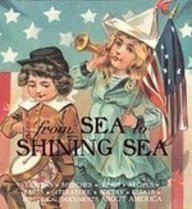This week ATP and I, along with some other colleagues, took an American History class. The class was very lecture-heavy with content much deeper than we would share with 5th graders. But there were some take-aways I want to remember to incorporate into future teaching.
The focus of the course was on ecological and geographical connections to history. (Fancy, eh?)
Day one focused on the demise of the buffalo (yup...5 hours). The presenter's argument was that much more of it was already in motion before the white hunter/settler.
I particularly liked this infographic that was shared. I think it's a great way to show students the deep impact that the decline of the buffalo had on the culture of the Plains indians.
On day two, we started with a presentation on
ArcGIS software. GIS stands for Geographic Information System.
The software has been purchased by the state of Ohio for K-12 classrooms, but is still in the roll-out phase. There are lots of potential uses for our newly geographic-focused curriculum, especially in allowing students to make inferences about different thematic maps and what they reveal about the city/region. Check out some of the data available
here and some examples of maps below.
The software is limited right now by the fact that students have to have a unique account linked by email. Also, right now all the free accounts are public, so make sure to remind students not to mark their own homes.
Disclaimer: a LOT of this seems very complicated and to my untrained eye. I would prefer to use Google Maps/Earth for most of the same type of lessons. I'm sure if you really get into the ArcGIS software there is a lot more depth, but I'm not sure I'm totally ready to dive in.
One feature I am eager to try is the newly developed addition of
Story Maps. Basically, they are animated maps that cover an event, from the Moore tornado to the Battle of Gettysburg. I want to remember to look into this more this school year.
Since then the take aways have been minimal, but we did take a walking tour of downtown Hamilton to learn about the Flood of 1913. I'm not sure if there is enough history in our school district to actually do this, but as AC (awesome colleague) shared, it would be an interesting project to have students create more of a "virtual" walking tour of some sort. AC's idea was to create a larger "walking tour" of a region. This could also be incorporated locally with the impact of European exploration. Perhaps a walking tour of nearby English, Spanish, or French architecture?
Overall, I'm thankful for the credit hours and the few nuggets of ideas, but mostly, it was a good week to catch up with colleagues before heading back into our classrooms.





























